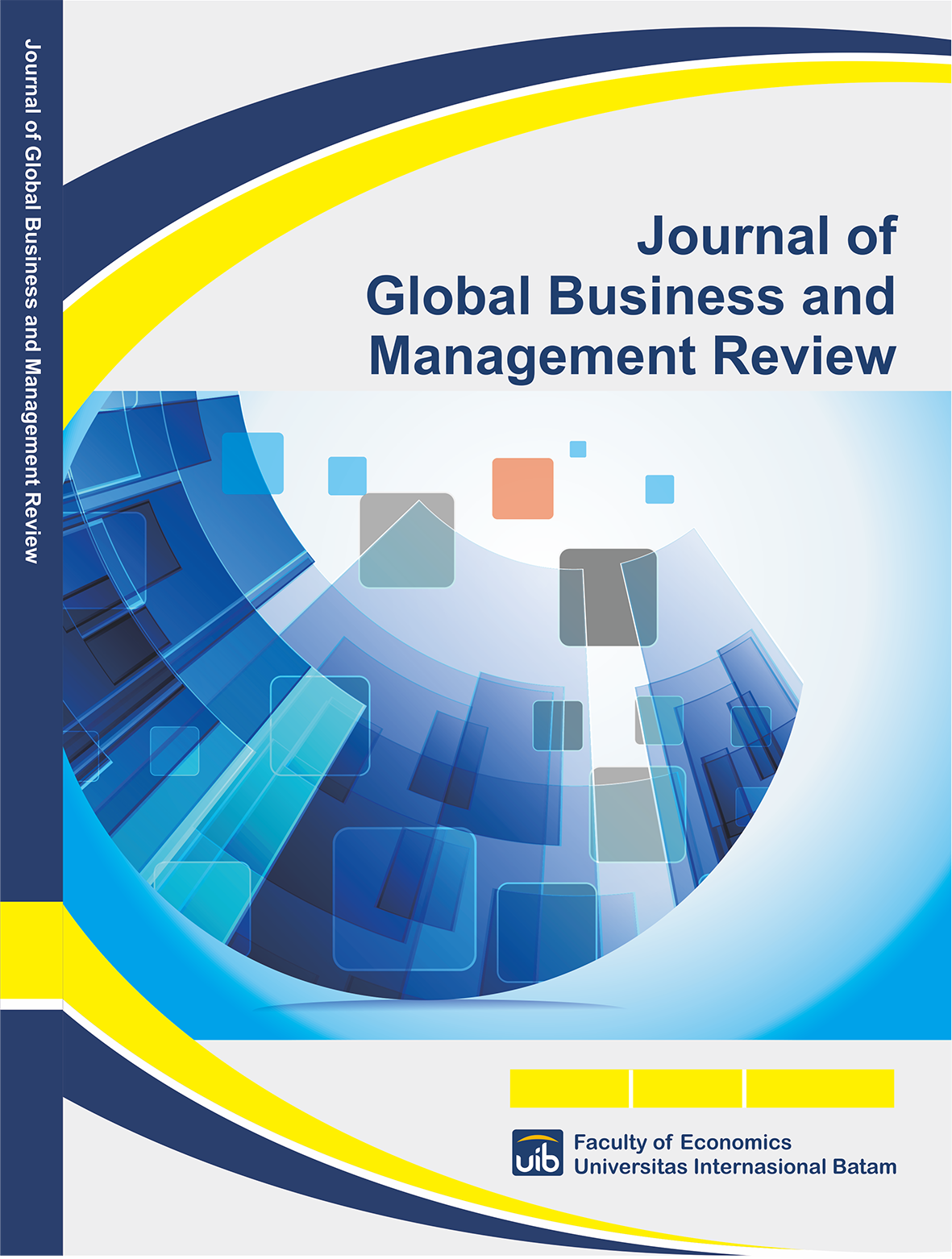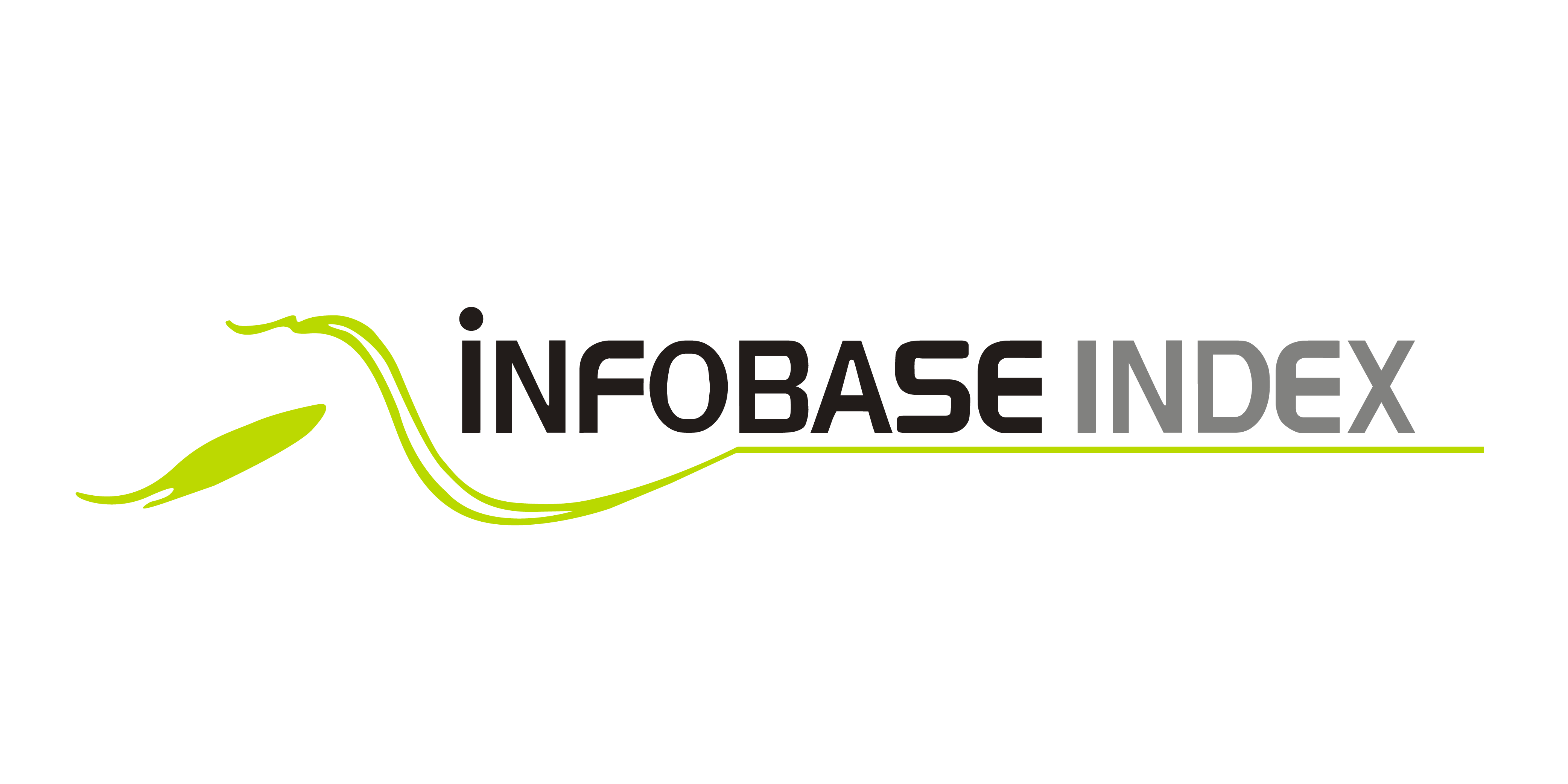UNCOVERING THE EFFECTS OF E-LEADERSHIP PERCEPTION ON EMPLOYEE ADAPTATION AND PRODUCTIVITY IN INDONESIAN STARTUP ORGANIZATIONS
DOI:
https://doi.org/10.37253/jgbmr.v6i1.9161Keywords:
Employee Adaptive Performance, Digital Company, Post-Covid-19Abstract
The objective of this research was to examine the relationships between various variables in the context of startup companies in Indonesia. The study was conducted over the course of one academic year, specifically 2022/2023, within a startup company in Indonesia. A sample of 270 respondents was randomly selected from the target population. Partial least squares structural equation modeling (PLS-SEM) was employed as the analytical technique. The t-test results indicated a positive influence of perceived e-leadership on teleworking output, subsequently impacting employee adaptive performance. Furthermore, transparent communication had a significant positive direct effect on employee adaptive performance, with a path coefficient of 0.286 (positive) and a p-value of 0.001-0.005 (significant). These findings highlight the importance of transparent communication in enhancing employee adaptive performance. The results have practical implications for decision-making processes and can potentially contribute to the development of effective strategies and practices within the industry.
Downloads
References
Aledo-Ruiz, M. D., Martínez-Caro, E., & Santos-Jaén, J. M. (2022). The influence of corporate social responsibility on students’ emotional appeal in the HEIs: The mediating effect of reputation and corporate image. Corporate Social Responsibility and Environmental Management, 29(3), 578–592. https://doi.org/10.1002/csr.2221
Al-Jabri, I. M., & Roztocki, N. (2015). Adoption of ERP systems: Does information transparency matter? Telematics and Informatics, 32(2), 300–310. https://doi.org/10.1016/j.tele.2014.09.005
Allen, T. D., Golden, T. D., & Shockley, K. M. (2015). How Effective Is Telecommuting? Assessing the Status of Our Scientific Findings. Psychological Science in the Public Interest, 16(2), 40–68. https://doi.org/10.1177/1529100615593273
Arkedis, J., Creighton, J., Dixit, A., Fung, A., Kosack, S., Levy, D., & Tolmie, C. (2021). Can transparency and accountability programs improve health? Experimental evidence from Indonesia and Tanzania. World Development, 142, 105369. https://doi.org/10.1016/j.worlddev.2020.105369
Avolio, B. J., Sosik, J. J., Kahai, S. S., & Baker, B. (2014). E-leadership: Re-examining transformations in leadership source and transmission. The Leadership Quarterly, 25(1), 105–131. https://doi.org/10.1016/j.leaqua.2013.11.003
Basit, A., & Siddiqui, D. A. (2020). Authentic Leadership and Openness to Change in Pakistani Service Industry: The Mediating Role of Trust and Transparent Communication. SSRN Electronic Journal. https://doi.org/10.2139/ssrn.3757483
Britt, T. W., Shen, W., Sinclair, R. R., Grossman, M. R., & Klieger, D. M. (2016). How Much Do We Really Know About Employee Resilience? Industrial and Organizational Psychology, 9(2), 378–404. https://doi.org/10.1017/iop.2015.107
Bryant, W., & Merritt, S. M. (2021). Unethical Pro-organizational Behavior and Positive Leader–Employee Relationships. Journal of Business Ethics, 168(4), 777–793. https://doi.org/10.1007/s10551-019-04211-x
Butali, P., & Njoroge, D. (2018). Effect of Employee Participation on Organizational Performance with Organizational Commitment as a Moderator. International Journal of Scientific Research and Management, 6(06), 2018–2478. https://doi.org/10.18535/ijsrm/v6i6.el015
Camacho, S., & Barrios, A. (2022). Teleworking and technostress: Early consequences of a COVID-19 lockdown. Cognition, Technology & Work, 24(3), 441–457. https://doi.org/10.1007/s10111-022-00693-4
Chaturvedi, S., Zyphur, M. J., Arvey, R. D., Avolio, B. J., & Larsson, G. (2012). The heritability of emergent leadership: Age and gender as moderating factors. The Leadership Quarterly, 23(2), 219–232. https://doi.org/10.1016/j.leaqua.2011.08.004
Chin, W. W., & Dibbern, J. (2009). An introduction to a permutation based procedure for multi-group PLS analysis: Results of tests of differences on simulated data and a cross cultural analysis of the sourcing of information system services between Germany and the USA. In Handbook of partial least squares: Concepts, methods and applications (pp. 171–193). Springer.
Chiu, W., & Cho, H. (2019). E-commerce brand: The effect of perceived brand leadership on consumers’ satisfaction and repurchase intention on e-commerce websites. Asia Pacific Journal of Marketing and Logistics, 33(6), 1339–1362. https://doi.org/10.1108/APJML-10-2018-0403
Darics, E. (2020). E-Leadership or “How to Be Boss in Instant Messaging?” The Role of Nonverbal Communication. International Journal of Business Communication, 57(1), 3–29. https://doi.org/10.1177/2329488416685068
Davis, J. P., & Aggarwal, V. A. (2020). Knowledge mobilization in the face of imitation: Microfoundations of knowledge aggregation and firm-level innovation. Strategic Management Journal, 41(11), 1983–2014. https://doi.org/10.1002/smj.3187
Deng, Y., Sun, W., Chen, M., & Yang, Y. (2019). Knowledge management and e-learning in virtual learning community based on social network analysis. Library Hi Tech, 37(4), 906–917. https://doi.org/10.1108/LHT-11-2018-0170
Elshaer, I. A., & Saad, S. K. (2022). Learning from Failure: Building Resilience in Small- and Medium-Sized Tourism Enterprises, the Role of Servant Leadership and Transparent Communication. Sustainability, 14(22), 15199. https://doi.org/10.3390/su142215199
Elyousfi, F., Anand, A., & Dalmasso, A. (2021). Impact of e-leadership and team dynamics on virtual team performance in a public organization. International Journal of Public Sector Management, 34(5), 508–528. https://doi.org/10.1108/IJPSM-08-2020-0218
Fotiadis, A. K., & Stylos, N. (2017). The effects of online social networking on retail consumer dynamics in the attractions industry: The case of ‘E-da’ theme park, Taiwan. Technological Forecasting and Social Change, 124, 283–294. https://doi.org/10.1016/j.techfore.2016.06.033
Goraya, M. A. S., Jing, Z., Shareef, M. A., Imran, M., Malik, A., & Akram, M. S. (2021). An investigation of the drivers of social commerce and e-word-of-mouth intentions: Elucidating the role of social commerce in E-business. Electronic Markets, 31(1), 181–195. https://doi.org/10.1007/s12525-019-00347-w
Green, C. J., Fortin, P., Maclure, M., Macgregor, A., & Robinson, S. (2006). Information system support as a critical success factor for chronic disease management: Necessary but not sufficient. International Journal of Medical Informatics, 75(12), 818–828. https://doi.org/10.1016/j.ijmedinf.2006.05.042
Groen, B. A. C., van Triest, S. P., Coers, M., & Wtenweerde, N. (2018). Managing flexible work arrangements: Teleworking and output controls. European Management Journal, 36(6), 727–735. https://doi.org/10.1016/j.emj.2018.01.007
Gross, J. J. (1998). Antecedent-and response-focused emotion regulation: Divergent consequences for experience, expression, and physiology. Journal of Personality and Social Psychology, 74(1), 224.
Gurr *, D. (2004). ICT, Leadership in Education and E‐leadership. Discourse: Studies in the Cultural Politics of Education, 25(1), 113–124. https://doi.org/10.1080/0159630042000178518
Hair Jr, J. F., Howard, M. C., & Nitzl, C. (2020). Assessing measurement model quality in PLS-SEM using confirmatory composite analysis. Journal of Business Research, 109, 101–110.
Hair Jr, J. F., Hult, G. T. M., Ringle, C. M., & Sarstedt, M. (2021). A primer on partial least squares structural equation modeling (PLS-SEM). Sage publications.
Hameed, F. (2016). Impact of Personality on Adaptive Performance with Mediating Role of Emotional Labor. Testing a Mediated Moderated Model among Front-line Female Hospitality Industry Employees in Pakistan. https://www.semanticscholar.org/paper/465f0d16587a606f52335aeef1283fbbc48af76e
Henseler, J. (2018). Partial least squares path modeling: Quo vadis? Quality & Quantity, 52(1), 1–8.
Indraswari, I. T., & Martono, S. (2020). Increased Productivity through Adaptive Behavior, Work Environment, and Training. Management Analysis Journal, 9(3), Article 3. https://doi.org/10.15294/maj.v9i3.34732
Iriqat, R. A. M., & Khalaf, D. M. S. (2017). Using E-Leadership as a Strategic Tool in Enhancing Organizational Commitment of Virtual Teams in Foreign Commercial Banks in North West Bank -Palestine. International Journal of Business Administration, 8(7), 25. https://doi.org/10.5430/ijba.v8n7p25
Kang, M., & Sung, M. (2017). How symmetrical employee communication leads to employee engagement and positive employee communication behaviors: The mediation of employee-organization relationships. Journal of Communication Management, 21(1), 82–102. https://doi.org/10.1108/JCOM-04-2016-0026
Kulshreshtha, K., & Sharma, G. (2021). Understanding e-leadership: Please mind the gap. Technological Forecasting and Social Change, 168, 120750. https://doi.org/10.1016/j.techfore.2021.120750
Laulita, N. B., & Setyawan, A. (2021). How Organizational Culture Moderate the Effect of Total Productive Maintenance Practice on Organization’s Operational Performance? Evidences from Indonesian Mining Industry. Jurnal Optimasi Sistem Industri, 20(2), 93-103.
Li, W., Liu, K., Belitski, M., Ghobadian, A., & O’Regan, N. (2016). E-Leadership through Strategic Alignment: An Empirical Study of Small- and Medium-sized Enterprises in the Digital Age. Journal of Information Technology, 31(2), 185–206. https://doi.org/10.1057/jit.2016.10
Li, Y., Zhang, W., & Wang, P. (2021). Working online or offline: Which is more effective? Research in International Business and Finance, 58, 101456. https://doi.org/10.1016/j.ribaf.2021.101456
Luo, N., Wang, Y., Zhang, M., Niu, T., & Tu, J. (2020). Integrating community and e-commerce to build a trusted online second-hand platform: Based on the perspective of social capital. Technological Forecasting and Social Change, 153, 119913. https://doi.org/10.1016/j.techfore.2020.119913
Marques-Quinteiro, P., Vargas, R., Eifler, N., & Curral, L. (2019). Employee adaptive performance and job satisfaction during organizational crisis: The role of self-leadership. European Journal of Work and Organizational Psychology, 28(1), 85–100. https://doi.org/10.1080/1359432X.2018.1551882
McCann, L. (2014). Disconnected Amid the Networks and Chains: Employee Detachment from Company and Union after Offshoring. British Journal of Industrial Relations, 52(2), 237–260. https://doi.org/10.1111/bjir.12014
Navaridas-Nalda, F., Clavel-San Emeterio, M., Fernández-Ortiz, R., & Arias-Oliva, M. (2020). The strategic influence of school principal leadership in the digital transformation of schools. Computers in Human Behavior, 112, 106481. https://doi.org/10.1016/j.chb.2020.106481
Niebuhr, F., Borle, P., Börner-Zobel, F., & Voelter-Mahlknecht, S. (2022). Healthy and Happy Working from Home? Effects of Working from Home on Employee Health and Job Satisfaction. International Journal of Environmental Research and Public Health, 19(3), Article 3. https://doi.org/10.3390/ijerph19031122
Norman, S. M., Avolio, B. J., & Luthans, F. (2010). The impact of positivity and transparency on trust in leaders and their perceived effectiveness. The Leadership Quarterly, 21(3), 350–364. https://doi.org/10.1016/j.leaqua.2010.03.002
Peters, P., & Batenburg, R. (2015). Telework adoption and formalisation in organisations from a knowlegde transfer perspective. International Journal of Work Innovation, 1(3), 251–270. https://doi.org/10.1504/IJWI.2015.074169
Prodanova, J., & Kocarev, L. (2021). Is job performance conditioned by work-from-home demands and resources? Technology in Society, 66, 101672. https://doi.org/10.1016/j.techsoc.2021.101672
Qiao, P., Fung, A., Fung, H.-G., & Ma, X. (2022). Resilient leadership and outward foreign direct investment: A conceptual and empirical analysis. Journal of Business Research, 144, 729–739. https://doi.org/10.1016/j.jbusres.2022.02.053
Ramos-Maçães, M.-A., & Román-Portas, M. (2022). The effects of organizational communication, leadership, and employee commitment in organizational change in the hospitality sector. Communication & Society, 89–106. https://doi.org/10.15581/003.35.2.89-106
Richter, N. F., Cepeda-Carrion, G., Roldán Salgueiro, J. L., & Ringle, C. M. (2016). European management research using partial least squares structural equation modeling (PLS-SEM). European Management Journal, 34 (6), 589-597.
Ringle, C., Da Silva, D., & Bido, D. (2015). Structural equation modeling with the SmartPLS. Bido, D., Da Silva, D., & Ringle, C.(2014). Structural Equation Modeling with the Smartpls. Brazilian Journal Of Marketing, 13(2).
Setyawan, A. (2021). The Role of Organizational Culture in the Influence of HR Practices, Knowledge Management, and Talent Management on Organizational Performance. JDM (Jurnal Dinamika Manajemen), 12(2), 275-284.
Smith, S. A., Patmos, A., & Pitts, M. J. (2018). Communication and Teleworking: A Study of Communication Channel Satisfaction, Personality, and Job Satisfaction for Teleworking Employees. International Journal of Business Communication, 55(1), 44–68. https://doi.org/10.1177/2329488415589101
Soelton, M. (2018). How Culture, Training Standard and Discipline on the Employee Performance Affect Hotel Management. EUROPEAN RESEARCH STUDIES JOURNAL, XXI(Issue 4), 378–385. https://doi.org/10.35808/ersj/1128
Spencer, J., Daybell, P. J., Eschenfelder, V., Khalaf, R., Pike, J. M., & Woods-Petitti, M. (1998). Contrasting Perspectives on Work: An Exploratory Qualitative Study Based on the Concept of Adaptation. The American Journal of Occupational Therapy, 52(6), 474–484. https://doi.org/10.5014/ajot.52.6.474
Stoian, C.-A., Caraiani, C., Anica-Popa, I. F., Dascălu, C., & Lungu, C. I. (2022). Telework Systematic Model Design for the Future of Work. Sustainability, 14(12), 7146. https://doi.org/10.3390/su14127146
Tan, R., & Antonio, F. (2022). New insights on employee adaptive performance during the COVID-19 pandemic: Empirical evidence from Indonesia. Journal of Entrepreneurship, Management and Innovation, 18(2), 175–206. https://doi.org/10.7341/20221826
Van Wart, M., Roman, A., Wang, X., & Liu, C. (2017). Integrating ICT adoption issues into (e-)leadership theory. Telematics and Informatics, 34(5), 527–537. https://doi.org/10.1016/j.tele.2016.11.003
Vătămănescu, E.-M., Dinu, E., Stratone, M.-E., Stăneiu, R.-M., & Vintilă, F. (2022). Adding Knowledge to Virtual Teams in the New Normal: From Leader-Team Communication towards the Satisfaction with Teamwork. Sustainability, 14(11), 6424. https://doi.org/10.3390/su14116424
Wynne-Jones, G., Buck, R., Porteous, C., Cooper, L., Button, L. A., Main, C. J., & Phillips, C. J. (2011). What Happens to Work if you’re Unwell? Beliefs and Attitudes of Managers and Employees With Musculoskeletal Pain in a Public Sector Setting. Journal of Occupational Rehabilitation, 21(1), 31–42. https://doi.org/10.1007/s10926-010-9251-7
Downloads
Published
Issue
Section
License
Copyright (c) 2024 Journal of Global Business and Management Review

This work is licensed under a Creative Commons Attribution-NonCommercial-ShareAlike 4.0 International License.















